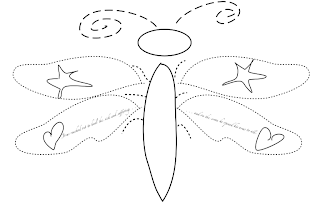Last night I was scanning the web for articles on worship just to see what people are talking about these days. In the part of the world in which I live and work (small town northern Ohio) there are as many places and ways to worship as anywhere else. There are large mega-churches with bands and no liturgy, there are many Roman Catholic churches and tons of other Protestant varieties to choose from. But here's the thing. . . part of doing worship well is first knowing who you are and what you believe. I don't mean, "Well, I believe in Jesus," of course! I am talking about knowing what the liturgy means, where it comes from and why we do what we do in worship. Otherwise, it become rote, boring, and lacks meaning. I believe that that is one reason that many people walk away from their Lutheran congregations in search of something "different." They visit a church with a band and no liturgy and get a "feeling" and call it the presence of the Holy Spirit. Now don't misunderstanding me, it very well could be the presence of the Holy Spirit but they've not experienced such a "feeling" before and so they fail to realize that that Spirit is also mightily present in the Lutheran liturgy. It takes a long time to teach the congregation why we do what we do, but the end result is deeper, more spiritual worship.
Consider this for congregations who like to chat before worship begins. . . put the announcements before the prelude so that the announcements don't interrupt the flow of worship later in the service. There's nothing like being in the moment and then hearing, "Okay now it's time for us to talk business and busy-ness and sign up and bring in this and don't forget that." And once the announcements are made and prayer requests collected and the important pieces of information the community needs to share are put out there. . . gather the hearts and minds of the worshippers to be silent in the presence of the God we know as Father, Son and Holy Spirit. Ask them to breathe deeply and to let all their worries and concerns melt away for the next sixty minutes. Encourage them to just "be" in the presence of God.
Consider this for teaching what the liturgy means (without giving a lecture during the announcements): put text boxes in your bulletin that answer frequently asked questions. One that I get a lot from newcomers is "Why do we say 'holy catholic church' in the Apostles' Creed? I thought we were Lutheran." So I have a little box beside the text of the creed that is not intrusive but answers that question saying that we believe in ONE church, the church of all time and place and that we are all connected through this one universal church." Deeper meaning evolves for the worshippers when they know what we believe and confess. Even preaching on the origins of the creed is a helpful exercise toward deeper understanding: why do we say these words, where did they come from, what do they really mean?
Consider this: when people say they go to a bible-based church (I would hope so!) as Lutherans we are often struck by that statement. We probably would never think to say such a thing because we take it completely for granted. In the Lutheran liturgy, however, there is more scripture read than in any non-denominational worship service. With an old testament reading, a psalm, an epistle and the gospel, we hear scripture from all major portions of the bible-- EACH WEEK!
Consider this: talk about the hymnody we sing. Talk about how congregational singing is a convention of the Reformation. Luther was disturbed that only the choir sang in his day and that worship is meant to be highly participatory, not a performance. So singing together, lifting our voices in praise, is key to worship. It doesn't matter what the songs are but some songs are so repetitive as to barely be saying anything. Encourage worshippers to actually read the words they sing and dwell on the depth of their meaning. They are rich and beautiful and draw us closer to the heart of God.
All these are ways to help worshippers meet the Spirit as it meets us in worship. Just a little help facilitating that process is the job of the leader. I have found in my own parish that offering some guidance and instruction on how and why we do what we do makes a huge difference in the worship event.
 |
| Leading the Congregation in Singing |
What other suggestions do you have for aiding the process of meeting the Spirit in worship?
What other things have you wondered about in terms of what we do? Or how have you taught those things?
Have a blessed Wednesday! And remember, a life of worship is a reflection of God's love, and that all of life is worship if we keep our minds and hearts on Christ.
Pastor Amy Little







